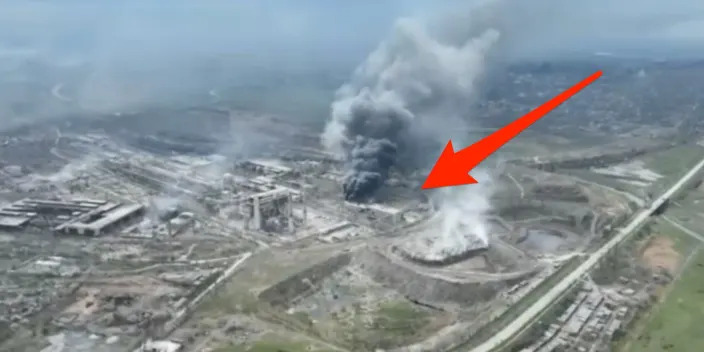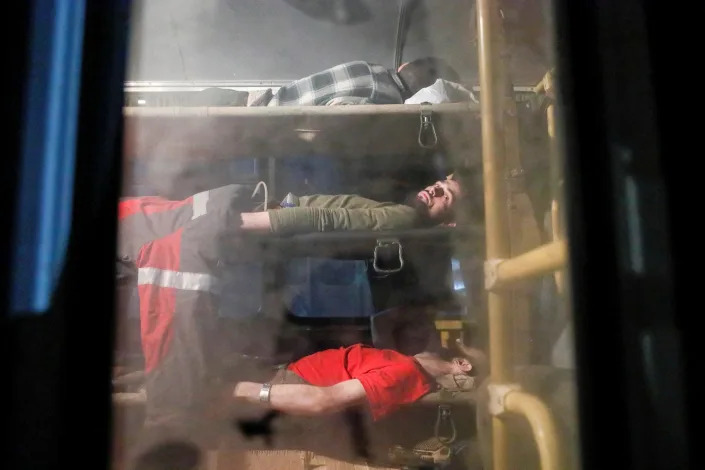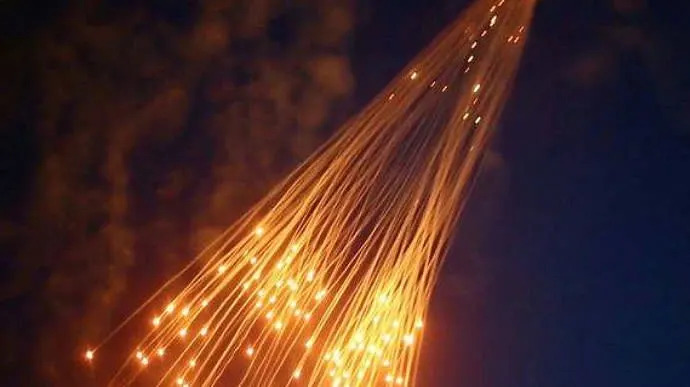
Workers fill sacks with wheat at a market yard on the outskirts of Ahmedabad
Mon, May 16, 2022
By Michael Hogan and Maytaal Angel
HAMBURG/LONDON (Reuters) - Wheat importers in Asia were scrambling to find new sources of supply on Monday after India banned exports of the grain at the weekend in a bid to keep a lid on soaring domestic prices, trade sources told Reuters.
Importers, especially those in Asia, were banking on wheat from India, the world's second-biggest producer, after exports from the Black Sea region plunged following Russia's Feb. 24 invasion of Ukraine.
Russia and Ukraine jointly account for about 30% of global wheat exports. Ukraine's exports are severely hampered because the war has forced it to close its ports, while Russia's exports have been hit by Western sanctions.
"Asian importers are likely to be in deep trouble. India was the Ukraine/Russia alternative especially for feed wheat. (They are) already today casting around for alternatives," said a Europe-based wheat trader at a global trade house.
He said importers in Asia were even looking to buy more Russian wheat despite payment problems linked to sanctions on Russian banks and elevated shipping insurance premiums.
Benchmark wheat futures in Chicago jumped by their 6% limit on Monday as markets reacted to the surprise ban, which came just days after New Delhi said it was targeting record wheat shipments of 10 million tonnes this year.
Its policy reversal now means only exports backed by letters of credit (LCs), or payment guarantees, issued before May 13 can proceed.
That equates to only about 400,000 tonnes, industry sources told Reuters, adding that 1.8 million tonnes is now trapped at the country's ports.
Traders holding that wheat face heavy losses because they will have to cancel their export deals and resell onto a weakening domestic market.
"It started already this morning. Traders (who don't have LCs) had to announce cancellation of contracts. I'd assume from mid-June there will be no more (India) shipments," said a second Europe-based wheat trader.
India's export ban, prompted by a heatwave that has cut harvest prospects and pushed domestic prices to a record high,
also comes amid output issues in traditional export powerhouses Canada, Europe and Australia.
Traders say the ban could drive global prices to new record peaks, hitting poor consumers in Asia and Africa particularly hard.
Top destinations for Indian exports include Bangladesh, Indonesia, Nepal and Turkey, and top global wheat buyer Egypt recently agreed to make a first ever purchase of Indian wheat.
That deal is officially still on the cards as India has said it will still allow exports to countries that request supplies "to meet their food security needs", but market experts are sceptical.
"There's uncertainty over how much will be exported to countries India considers having food security needs. They might just export to friendly neighbouring countries," said Carlos Mera, agri commodities analyst at Rabobank.
(Reporting by Maytaal Angel in London and Michael Hogan in Hamburg; Additional reporting by Gus Trompiz in Paris; editing by David Evans)

Reporter
Published May 16, 2022
In 2020, India wanted to vaccinate the world. Shortly after, it was forced to do a volte-face following an acute shortage at home.
A few weeks ago, it claimed it could feed the world should the World Trade Organization allow it. Later, on May 4, prime minister Narendra Modi reiterated his desire to “save the world from hunger.” After all, in the wake of the Russia-Ukraine war, India had got the perfect window to become a major wheat exporter.
On May 14, however, India banned the export of wheat, largely owing to a record high domestic food inflation. Lower yield due to intense heat waves piled on the country’s agony.
The G-7 has criticised India’s backtracking. Hardeep S Puri, the country’s agriculture minister, responded saying India will meet its immediate commitments.
The unofficial ban on vaccine exports during the deadly delta variant wave in April 2021 had hampered Serum Institute of India’s commitments to the World Health Organization’s vaccine-sharing initiative. The ban on wheat exports puts immense pressure on the global supply.
This may be deemed a failure for India from a soft-power, geopolitical standpoint.
Can India become a major wheat exporter?
Modi’s goal of India becoming a major wheat exporter hinged on the opportunity presented by the war. While India has been the world’s second-largest producer of the commodity, most of it was used domestically. Its share in the global wheat exports has been only around 1%.
It hoped to considerably plug the deficit created by Russia, which accounts for 30% of the global wheat exports. To some extent, Indian wheat exports did rise. Countries like Egypt and Turkey, besides others in Asia, tapped India following the onset of the war.
This, however, pushed prices to record highs at home. In the past few weeks, wheat prices have soared by 15%-20% in India, forcing the government’s hand. Now, with the ban, prices are rising globally, too.
This, combined with a lack of long-term policies on taxes and supply chain, is unlikely to make India a major wheat exporter anytime soon.















